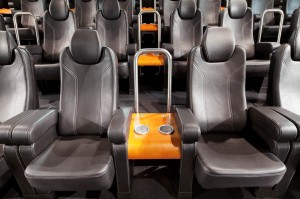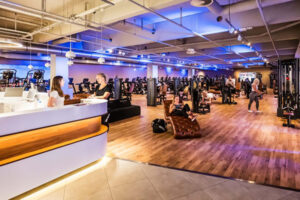BY CHRISTOF PAPOUSEK
What is a “premium screen”? On the one hand, it is about technologically upgrading projection and sound. On the other hand, premium screens can also distinguish themselves from normal cinemas through seating comfort, film content, or their programs.
TECHNOLOGY
Technologically, cinemas have developed extensively in recent years due to the digitization of projection and the wide availability of 3D systems. The manufacturers of special projection and sound systems have made a great contribution in this regard. Beyond that, there are systems that can further enhance the already high average quality of all-digital cinema chains. One example is “IMAX” screens, which offer a complete premium cinema experience. IMAX has evolved in recent years from a provider of great documentaries on large screens (LFC, Large Format Cinema) to a techno-logy provider for premium screens. A selection of Hollywood films and other blockbusters are now partially shot with IMAX cameras or enhanced with other special effects. The IMAX version of a blockbuster stands out from the normal theatrical version and offers something special. IMAX works together with cinema operators to add large screens to existing auditoriums and adapts these according to the relevant requirements of IMAX engineers. The screen is brought closer to the audience, while the projection room is often moved inwards, thereby somewhat reducing seating capacity. This gives visitors the feeling they are right in the middle of the action – and not just during 3D presentations. In addition, the image is produced by two parallel, high-performance digital projectors in order to achieve more powerful and vividly colorful projection. It is also important that the IMAX brand is known for high-tech cinema and thus grants locations and local cinemas a positive brand image. IMAX seeks out its partners and corresponding locations carefully and ensures that the experience remains something special by limiting the overall number of screens available.
Other providers are trying to establish themselves in this area as well. One example is the 3D system manufacturer Real D, which offers a system headed in this direction. Real D calls its premium Screens “Luxe” and is completely flexible in regards to the content.
The cinema technology company Dolby has been busy in recent years developing 3D sound to go with 3D images. This has been a great success and is now incorporated in premium auditoriums under the name Dolby Atmos. It is a so-called multi-channel sound system that uses 60 channels and 55 speakers distributed throughout the room –including two rows of speakers in the ceiling – plus five huge sub-woofers, to produce full surround sound. Projection technology is evolving and the cinema industry is on the verge of introducing laser projection, which will replace the existing digital projection for very large screens, possibly even replacing parallel projection. These systems are not yet market ready, but we assume that they will be the industry standard for projection on premium screens in two to three years.
COMFORT / CONTENT
A premium screen can also stand out through improved seating comfort. Leather armchairs with generous leg room and comfortable width have already become commonplace. Cinema owners are pursuing different approaches regarding seating comfort, whether by installing a row with superior comfort in several auditoriums or by setting this level of comfort as standard for an entire auditorium. This can, of course, be combined with the technological options mentioned above and customized to provide any kind of high-class cinema experience. Seat comfort is sometimes combined with food-service, we often call this VIP Cinema. In such cases, the food served in the auditoriums or in lounges in front of them is of central importance – the big challenge in such cases is certainly to ensure high-quality food and drinks at the cinema. Reactions to sushi and finger food at the cinema vary. Constantly serving guests in cinemas can also interfere with the viewing experience.
Premium screens also offer some interesting possibilities regarding content. The normal selection of movies is naturally extremely diverse. In addition to that, however, operators can appeal to a particular audience on a regular basis with live transmissions of operas, ballets, or concert events.
Cinema owners are pursuing different approaches towards seating comfort, whether by installing a row with superior comfort in several auditoriums or by setting this level of comfort as standard for an entire auditorium.
All of this is associated with a significant investment and should help cinema or shopping mall operators to achieve a certain rate of return or perhaps indirect profitability. Premium screens make it possible for operators to stand out from the competition in saturated markets by implementing the described systems and underlining the premium screen experience, helping operators to gain market share.
In cities with a significant oversupply of screens – such as Vienna and Budapest – multiplex cinemas that have integrated IMAX or other systems earlier on have done well despite their tough competition. With higher standards come higher ticket prices and when these are combined with more visitors, the investment pays for itself. The advantage is not just for cinema operators, however. The effects on the cinema or shopping mall landlords must always be considered. Performance-based rental models must be partially adapted and landlords must cover some costs. In addition to the cinema operator’s brand, the premium screen brand, such as IMAX, must also be taken into account in the overall brand appearance of a shopping mall.
Finally, it should be noted that not every auditorium can be a premium screen and that this also does not make sense for every cinema. Premium screens require premium locations and premium quality that begins in the cinema and ends with shopping mall operators – including foodservice.







